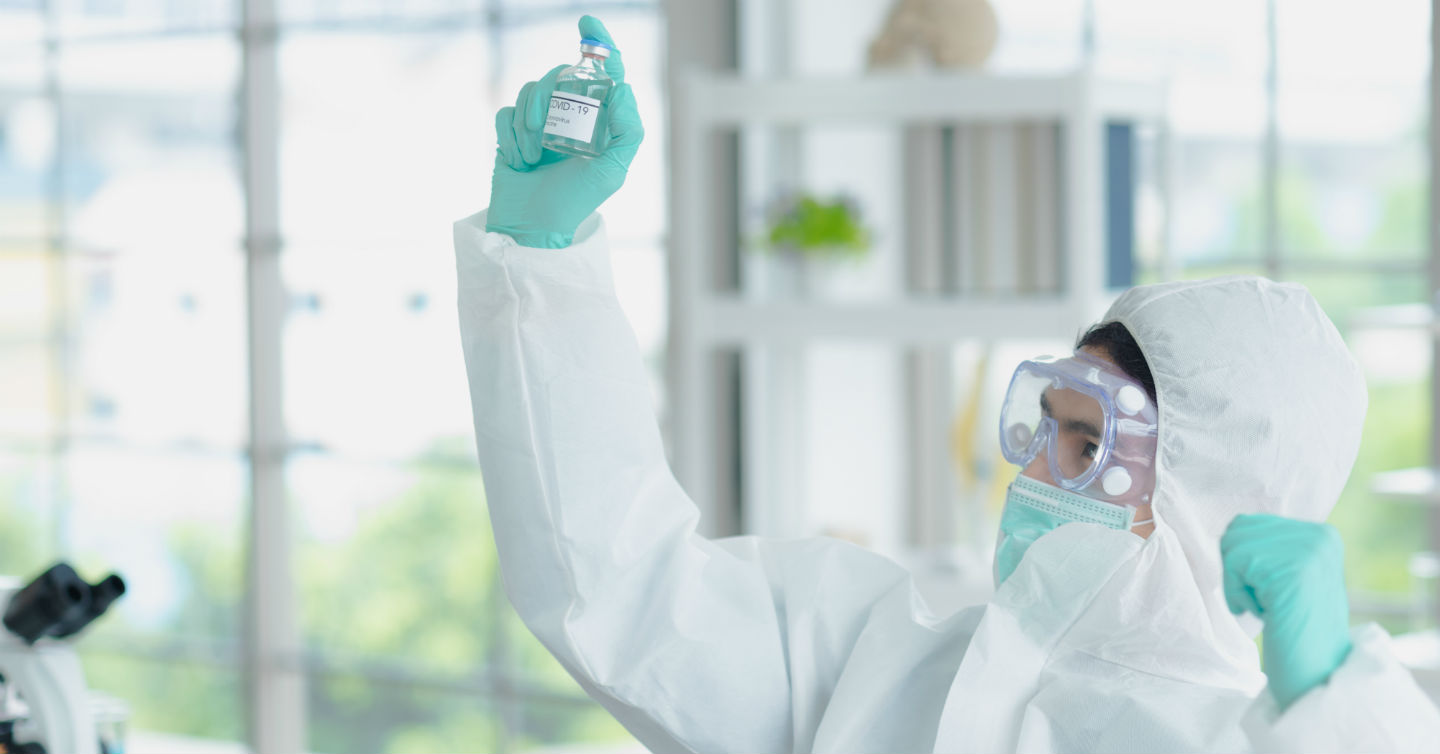Getting to Know Our New Ally in the Fight Against COVID-19: Vaccines

Separating Myths from Facts About the COVID-19 Vaccines
By Beth Coopman Pharm D., pharmacist at Network Health
Originally published on 12/29/2020 at 2:00 p.m.
After almost a year of social distancing, face masks and living in a quarantined world, the spread of Covid-19 cases is yet to be contained.
While this year has been difficult physically, mentally and emotionally, we now have some concrete reasons to be hopeful about a resolution to the pandemic stress in the near future.
Science now offers a real solution for life to return to normal as emergency use authorizations (EUA) were approved for Pfizer-BioNTech and Moderna’s vaccines to prevent COVID-19. As with anything new, it’s normal to have reservations. However, separating fact from fiction helps us recognize that these vaccines are an essential tool in the fight against COVID-19.
Myth: I’m the first person to get the vaccine to prevent COVID-19.
Fact: According to the Centers for Disease Control and Prevention (CDC) website, 556,208 vaccines were administered as of December 20, 2020. Pfizer-BioNTech enrolled over 40,000 people and Moderna over 25,000 people in clinical trials for the vaccine, which started as early as April 2020.
Myth: Steps were skipped in the vaccine study phases to get rushed approval.
Fact: No steps were skipped in the COVID-19 vaccine approval.
For the first time in history, instead of waiting for the first study phase to be completed before starting the second phase and so forth, phases overlapped one another, meaning that the full duration of each study phase was completed, as is normally the case, but in less time.
Because of the toll of COVID-19 globally, unlimited resources were available, empowering the world’s best scientists, robust government funding and large numbers of diverse voluntary trial participants to work toward the development of these vaccines.
Manufacturers saved time by increasing production of the vaccine before approval. In the past, manufacturers waited for FDA approval before ramping up production. These safe and innovative time-saving efforts are why the vaccine is available today instead of years down the road.
Myth: This is brand new technology that has never been studied before.
Fact: Researchers have been studying messenger RNA (mRNA) vaccines for decades.
Vaccines using mRNA technology like the flu, Zika, rabies and cytomegalovirus (CMV) have been studied for decades too.
Cancer research has also used mRNA technology for treatment. Vaccines using mRNA are especially valuable because they can be made faster and easier than previously used vaccines.
Myth: The safety of the vaccine hasn’t been properly studied.
Fact: Safety is the number one priority for vaccine approval.
The Vaccine and Related Biological Products Advisory Committee (VRBPAC) and The Advisory Committee on Immunization Practices (ACIP) are independent advisory committees, separate from vaccine manufacturers, that review vaccine study results.
The Pfizer-BioNTech and Moderna vaccine trials both produced similarly low severe adverse events that were very close to the same rate as the placebo group, which are the study participants that received an injection without the vaccine.
Typical vaccine injection reactions like fatigue, headache, muscle pain, chills and injection-site pain were common and can indicate that our body’s immune system is working hard to protect us against future COVID-19 exposure.
Learn more about vaccines and their development here.
Myth I don’t need the vaccine because I’ve had COVID-19 or tested positive for COVID-19 antibodies.
Fact: The vaccine could provide longer and better protection against COVID-19.
Protection from the vaccine occurs one to two weeks after the second dose and it’s safe to get the vaccine if COVID-19 was contracted in the past.
Myth: Pfizer-BioNTech and Moderna’s vaccines contain COVID-19 and could alter my DNA.
Fact: Pfizer-BioNTech and Moderna’s vaccines do not contain the live virus that causes COVID-19 and does not alter someone’s DNA.
The mRNA vaccine does not affect or interact with our DNA in any way because it never enters our cell’s nucleus, where our DNA genetic material is stored.
The mRNA vaccine works by injecting a harmless “spike protein” piece that looks the same as the spike protein found on the surface of the virus that causes COVID-19.
The virus is NOT being injected. Our immune system sees the spike protein as something to fight off, so our body makes antibodies to fight the spike protein. Our body breaks down and gets rid of the mRNA spike protein once our body’s immune system has finished using the vaccine’s instructions to make antibodies.
Those antibodies will remember how to fight and get rid of the COVID-19 virus if infected in the future.
Hope is in Sight for COVID-19 Pandemic
With these vaccines now getting emergency use authorization, we really are in the home stretch of weathering this disease which has affected so many.
Paying attention to the World Health Organization (WHO) and the United States Centers for Disease Control and Prevention (CDC) guidelines like washing hands frequently, wearing a mask, making only essential trips out, keeping at least six feet of distance between yourself and others and self-quarantining if you develop any associated symptoms is the best way to ensure these last few months are as safe as possible.
For more information on the coronavirus and Network Health’s commitment to keeping our members safe during this time, please click here. To learn more about answers to common questions from the CDC, click here.
To learn how your health plan can help you enjoy the healthiest and strongest life possible, call us today.



